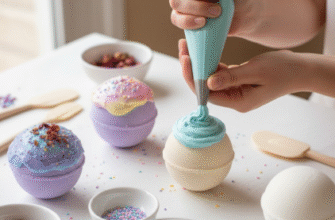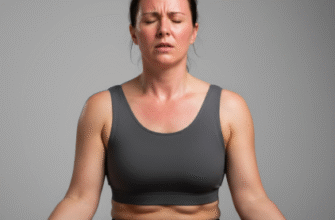Wrapping yourself in a bathrobe after a shower, stepping out of a pool, or just lounging around the house on a lazy Sunday morning is one of life’s simple pleasures. But not all bathrobes are created equal. The difference between a so-so robe experience and pure, unadulterated comfort often comes down to one crucial factor: the material. Choosing the right fabric can transform your robe from a mere covering into a personal sanctuary. With so many options available, how do you pick the one that’s perfect for you? This guide will walk you through the most common bathrobe materials, helping you understand their unique properties so you can find your ideal match.
Why Material Matters So Much
Think about it – your bathrobe touches your skin directly, often when you’re wet or seeking warmth. The material determines key characteristics like absorbency, warmth, weight, softness, and even how easy it is to care for. A robe meant primarily for drying off after bathing needs different qualities than one intended for cozying up on a chilly evening. Understanding the fabric is the first step towards bathrobe bliss.
Exploring Common Bathrobe Fabrics
Let’s dive into the world of bathrobe materials, exploring the pros, cons, and best uses for each type.
Cotton: The Classic All-Rounder
Cotton is arguably the most popular bathrobe material, and for good reason. It’s a natural fiber known for its breathability and absorbency. However, ‘cotton’ is a broad category, and the specific type and weave significantly impact the final feel and function.
- Turkish Cotton: Highly prized for its long fibers, Turkish cotton offers a fantastic balance of absorbency and quick drying. It becomes softer and more absorbent with each wash. Robes made from Turkish cotton feel luxurious yet practical, great for post-shower use.
- Egyptian Cotton: Renowned for its extra-long fibers, Egyptian cotton creates incredibly soft, strong, and highly absorbent fabrics. These robes feel exceptionally plush and are excellent at soaking up water, though they might take a bit longer to dry than Turkish cotton.
- Standard Cotton: More budget-friendly options often use standard upland cotton. While still absorbent and breathable, they might not have the same luxurious softness or longevity as Turkish or Egyptian varieties.
Weaves matter too:
- Terry Cloth: This is the classic bathrobe weave, featuring loops of yarn that increase the surface area, making it highly absorbent. Think traditional towels. It’s perfect for drying off quickly but can feel bulky.
- Waffle Weave: Characterized by a distinctive square or diamond pattern, waffle weave cotton is lighter and dries faster than terry cloth. It’s still absorbent but offers better breathability, making it ideal for warmer climates or spa-like experiences.
- Velour: Velour is essentially terry cloth where the loops on the outside have been sheared off, creating a soft, velvety surface. It feels incredibly plush against the skin but is less absorbent on the outside than traditional terry. Often, the inside retains the loops for absorbency.
- Flannel: A woven cotton fabric that’s brushed to create extra softness and warmth. Cotton flannel robes are cozy and comfortable for lounging, especially in cooler weather, but aren’t the best for absorbency right out of the shower.
Best for: Post-bath drying, general lounging, people who prioritize natural fibers and breathability.
Microfiber: Lightweight and Quick-Drying
Microfiber is a synthetic material made from finely woven polyester or polyamide fibers. Its main advantages are its incredibly lightweight feel and its rapid drying time. Microfiber robes are often very soft, sometimes described as having a ‘suede’ or ‘cashmere’ feel, depending on the finish.
While generally absorbent, some find microfiber doesn’t absorb water quite as effectively as thick cotton terry. It pulls moisture away, but might feel slightly less satisfying if you want that immediate ‘soaking up’ sensation. Because it’s synthetic, it can sometimes be less breathable than cotton, which might be a consideration in very warm, humid climates. However, its quick-drying nature makes it excellent for travel or situations where you need a robe that won’t stay damp for long.
Best for: Travel, quick drying, lightweight warmth, those who prefer a very smooth feel.
Fleece: Ultimate Warmth and Coziness
When cold weather hits, nothing beats the insulating power of fleece. This synthetic fabric, usually made from polyester, is designed to mimic the properties of wool fleece but is much lighter and easier to care for. Fleece robes are exceptionally soft, plush, and incredibly warm.
The major downside? Fleece is not absorbent. It repels water rather than soaking it up, making it unsuitable for drying off after a shower. Think of fleece robes purely as loungewear – perfect for snuggling on the couch, wearing over pajamas on chilly mornings, or adding a layer of warmth around the house. They are easy to wash and dry quickly.
Best for: Cold climates, lounging, maximum warmth and softness, people who prioritize coziness over absorbency.
Important Note on Fleece: While wonderfully warm, fleece is essentially a plastic-based fabric. It is not absorbent and is intended purely for warmth and comfort. Avoid using a fleece robe to dry off, as it will simply push water around rather than soaking it up.
Silk and Satin: Luxurious Elegance
For a touch of pure luxury and glamour, silk or satin robes are unmatched. Natural silk is a protein fiber known for its incredible softness, beautiful drape, and subtle sheen. Satin is a specific type of weave (not a fiber itself) that creates a glossy, smooth surface, often made from silk, polyester, or nylon.
These robes are extremely lightweight and feel wonderful against the skin. They are naturally hypoallergenic (in the case of pure silk). However, they offer very little warmth and are not absorbent. Silk and satin robes are more about feeling elegant and comfortable in warmer temperatures or for special occasions. Silk, in particular, often requires delicate care (hand washing or dry cleaning).
Best for: Warmer climates, feeling luxurious, special occasions, those who prioritize elegance over warmth or absorbency.
Linen: Natural, Breathable, and Unique
Linen, made from the fibers of the flax plant, is one of the oldest textiles known to humanity. It’s renowned for its exceptional breathability and durability. Linen robes are naturally absorbent (and become more so with washing) and dry relatively quickly. They have a distinctively crisp yet soft texture that gets better with age.
Linen is an excellent choice for warm climates due to its cooling properties. It’s also naturally antimicrobial and hypoallergenic. The main drawback is that linen wrinkles very easily, which some see as part of its charm, while others may find it bothersome. It tends to be more expensive than standard cotton.
Best for: Warm climates, spa environments, those who love natural fibers and a relaxed, slightly rumpled look, prioritizing breathability.
Bamboo Rayon: Soft, Sustainable, and Absorbent
Bamboo fabric (usually bamboo rayon or viscose) has gained popularity as a more sustainable option. It’s known for being incredibly soft, often compared to silk or cashmere, yet highly absorbent and breathable, much like cotton. Bamboo fabric also has natural moisture-wicking properties and some antimicrobial qualities.
These robes offer a great blend of comfort, absorbency, and breathability, making them versatile for both post-bath use and lounging. They drape nicely and feel gentle on sensitive skin. While the processing of bamboo into rayon involves chemicals, choosing brands with responsible manufacturing practices (like closed-loop systems) can mitigate environmental concerns.
Best for: Eco-conscious consumers, year-round use, sensitive skin, those wanting softness combined with good absorbency and breathability.
Considering Your Needs: Climate, Purpose, and Preference
Now that you know the materials, think about your specific needs:
- Climate: Live somewhere cold? Fleece or a heavy cotton terry/velour might be best. In a hot climate? Linen, lightweight cotton (like waffle weave), silk/satin, or bamboo are better choices.
- Primary Use: Is it mainly for drying off after showering? Prioritize absorbency – cotton terry, Turkish or Egyptian cotton, waffle weave, or bamboo are top contenders. Is it mostly for lounging and warmth? Focus on softness and insulation – fleece, cotton flannel, or cotton velour fit the bill. For elegance? Silk or satin.
- Feel Preference: Do you love thick and plush? Go for terry, velour, or fleece. Prefer something lightweight? Waffle weave, microfiber, silk/satin, or linen. Want ultimate softness? Egyptian cotton, microfiber, fleece, silk, or bamboo.
- Care: Check the care label! Cotton, microfiber, and fleece are generally machine washable. Silk and sometimes linen may require more delicate handling.
Verified Tip: Match the material to your primary goal. For maximum absorbency after bathing, choose cotton terry, waffle, or bamboo rayon. For pure warmth and cozy lounging, especially in cold weather, fleece is unparalleled, but remember it won’t dry you off. For lightweight elegance, consider silk or satin.
Finding Your Perfect Robe
Choosing the right bathrobe material is a personal journey. There’s no single ‘best’ material – only the best material for you. By considering the properties of cotton (in its various forms), microfiber, fleece, silk/satin, linen, and bamboo, and thinking about your climate, how you’ll use the robe most often, and your personal texture preferences, you can narrow down the options. Investing a little time in understanding the fabrics will lead you to a bathrobe that provides comfort, function, and perhaps even a touch of luxury, day after day.








